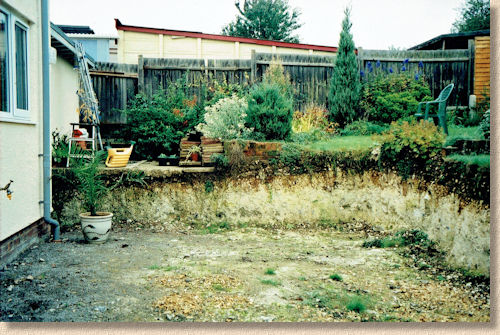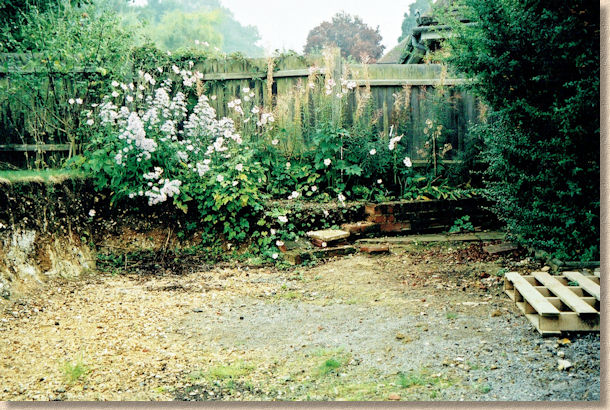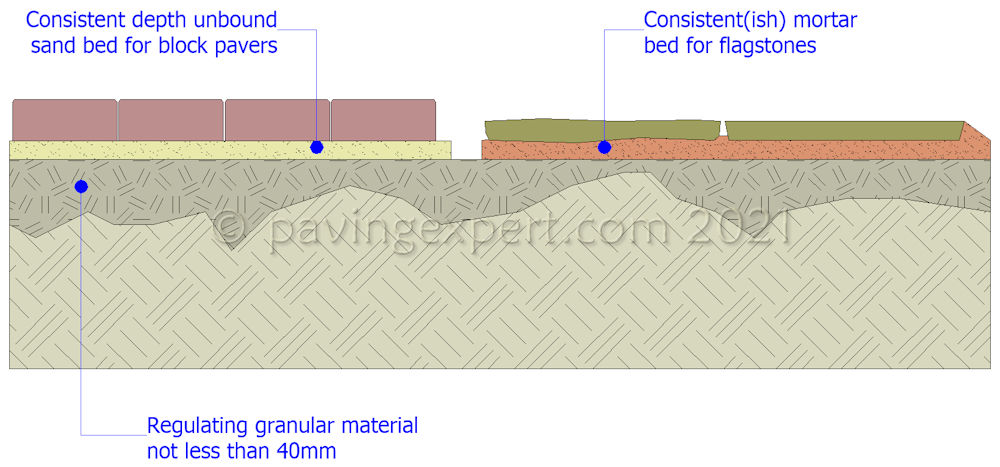
Andy Gee asks:
Is chalk sufficient as a Sub base? I know your website says that one is always needed but would chalk suffice as a sub base?
The reason I ask is that I have spent a small fortune getting down to the current level (about 50mm below the pavement level) and I am hoping that I have gone deep enough, otherwise it is more cost and I am rapidly running out of money!
Everything I have dug out has been chalk so I am now left with a chalk floor that I need to install on top of.
Introduction:
There is an obvious temptation to leave the exposed bedrock as it is and build the overlying pavement layers (laying course and paving) directly over it, but with several types of paving and surfacing, this is not always the best idea.
The reason for saying this is that, for some paving types, the presence of a laying course with uniform thickness is critical to the mid-long term performance of the pavement.

Why not skip the sub-base?
Modular paving laid on an unbound laying course (eg: block paving , loose setts , flagstones ) really do need to have a laying course of a consistent depth throughout. Should the laying course be, say, 20mm in one spot and 120mm in another, then there will be a difference in the amount of settlement that will take place over time. The 20mm deep bit might settle to say, 17mm, a drop of 3mm, but the 120mm bit could well settle by 30mm or more, and this differential settlement will result in an uneven pavement surface.

For paving laid on a bound laying course (eg: setts , flags , kerbs ), having significant variation in the thickness of the laying course can also lead to problems, although these are not usually as evident as those associated with unbound laying courses.
Even with bound surfacing materials, such as concrete or bitmac , having varying thicknesses across the pavement makes no sense and can, in some circumstances, make accurate laying of bound materials that much more difficult.
Further, bound materials, almost by definition, are more expensive than unbound materials such as DTp1 or Crusher Run, so why use the more expensive material to make up level variation when the same task can be done much more cheaply with a granular, unbound material?

So, for unbound construction, a regular, consistent-depth laying course is essential, while for bound construction, its simpler and usually cheaper to have a consistent depth of construction.
How it should be done:
One of the functions of a sub-base that is often overlooked in the obsession with its load-bearing/load-spreading role, is that it can be levelled to a reasonably high degree of tolerance, so that, when it comes to that laying course, the essential consistent thickness is achievable.
On projects where the bedrock is exposed, the load bearing capability of a full sub-base layer is not required .but! The capability of granular sub-base material to be spread, levelled and compacted to give a true and even surface on which a consistent depth laying course can be placed is eminently desirable.
In effect, granular sub-base material is used to "regulate" the exposed bedrock beneath so that a true and even layer is created for the laying course.

So, in practice, on sites where bedrock or similar hard, acceptable substrates are present, the usual practice is to excavate to a depth that will allow, say 30-50mm of granular sub-base material to be placed and levelled and so regulate any high spots or hollows, ups and downs in the substrate. Its much, much easier to accurately level a DTp1/Cl.805 material than to try to shape chalk, sandstone or limestone to an even finish.
Consequently, the short answer is that, while a full depth sub-base (100mm or more) is not required to provide strength to the pavement, a shallow sub-base is very useful in aiding regulation of levels and so ensuring a laying course of the optimum thickness.

